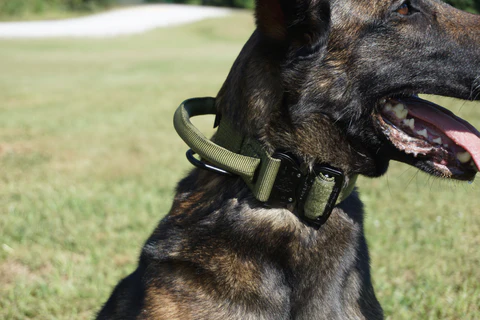How a Dog Training Collar With Bark Control Reduces Excessive Barking
Excessive barking is a common issue that many dog owners face. While barking is a natural form of communication for dogs, it can become disruptive when it is constant or unprovoked. One effective solution to help reduce excessive barking is a dog training collar with bark control features. These collars use various methods to discourage barking, helping to create a quieter, more peaceful environment for both dogs and their owners. In this article, we will explore how a dog training collar with bark control works and how it can help reduce excessive barking.
1. Understanding the Causes of Excessive Barking
Before we dive into how bark control collars work, it’s important to understand why dogs bark excessively. Common causes of excessive barking include:
- Attention Seeking: Dogs often bark to get attention, whether it’s from their owners, other pets, or strangers.
- Anxiety or Fear: Separation anxiety, fear of unfamiliar sounds, or new environments can cause dogs to bark out of stress.
- Boredom: Dogs that lack sufficient physical or mental stimulation may bark out of boredom or frustration.
- Territorial Behavior: Dogs may bark to protect their home or territory, especially when they perceive an intruder.
- Excitement: High energy dogs may bark when they are excited or eager to play.
By addressing the root cause of the barking, a bark control collar can be a helpful tool in modifying this behavior.
2. How a Bark Control Collar Works
A dog training collar with bark control is designed to detect the sound of your dog’s bark and respond with a correction. Depending on the model, there are several methods of correction used, including:
a) Sound or Vibration
Some bark control collars use a sound or vibration when the dog barks. The sound or vibration is a mild and non-painful stimulus that grabs the dog’s attention and interrupts the barking. Over time, the dog associates the barking with the uncomfortable sensation, leading to a decrease in excessive barking.
b) Static Correction
Many modern bark control collars use a mild static shock, which is similar to the sensation of a static electricity shock. This correction is intended to startle the dog and discourage further barking. The intensity of the static shock can often be adjusted to suit the dog’s temperament and sensitivity.
c) Spray Collars
Spray collars are another option for bark control. These collars release a burst of citronella or unscented spray when the dog barks. The smell and sensation of the spray are unpleasant but harmless, and dogs tend to stop barking in response to the discomfort. Citronella collars are a popular choice because dogs tend to find the smell unpleasant, but it does not harm them.
3. The Benefits of Bark Control Collars
Using a bark control collar can offer several benefits for both dogs and their owners:
a) Helps Break the Barking Habit
One of the main benefits of bark control collars is their ability to help break the barking habit. By providing consistent and immediate feedback, the dog learns to associate barking with the correction. This helps to reduce the behavior over time, especially when used in conjunction with other training methods.
b) Non-Harmful and Safe
When used properly, bark control collars are generally safe for dogs. The correction methods, such as vibration, sound, or mild static, are designed to be non-harmful and are intended only to interrupt the barking. Most collars are adjustable, allowing owners to fine-tune the level of correction to suit their dog’s needs and sensitivities.
c) Improves Communication and Bonding
When barking is reduced, dogs are less likely to feel the need to demand attention through disruptive behavior. This can improve the bond between the dog and owner, as it encourages more calm and focused interactions. As a result, both the owner and dog can enjoy better communication and less frustration.
d) Suitable for Various Breeds and Sizes
Bark control collars are available in various models designed for different dog breeds, sizes, and temperaments. From small lap dogs to large working breeds, there is a collar that can cater to your dog’s specific needs.
4. Selecting the Right Bark Control Collar for Your Dog
To ensure that the bark control collar is effective and comfortable for your dog, there are several factors to consider:
a) Size and Fit
Choose a collar that fits your dog’s neck comfortably without being too tight or too loose. The collar should sit just below the ears and not irritate the skin. Many collars come with adjustable straps to accommodate different sizes.
b) Corrective Method
Different dogs respond better to different types of corrections. Some dogs may react more effectively to a vibration collar, while others may respond better to a spray collar. Consider your dog’s personality, sensitivity, and previous experiences with training devices when selecting the best method.
c) Sensitivity Levels
Many bark control collars come with adjustable sensitivity settings that allow the owner to control the intensity of the correction. Choose a collar that offers various settings to fine-tune the level of feedback your dog receives. This will ensure that the correction is not too overwhelming or ineffective.
d) Rechargeable vs. Disposable Batteries
Some bark control collars run on rechargeable batteries, while others use disposable ones. Rechargeable collars are more environmentally friendly and cost-effective in the long run, while disposable battery collars may be easier to replace if necessary.
5. Tips for Using a Bark Control Collar Effectively
While a bark control collar can be a powerful tool, it’s important to use it correctly for the best results:
- Use in conjunction with training: A bark control collar is most effective when used as part of a comprehensive training program. Reinforce positive behaviors with praise and rewards, and avoid using the collar as the only method of training.
- Start with the lowest setting: Begin with the lowest level of correction to ensure that your dog is not overwhelmed by the sensation. Gradually increase the level as needed.
- Monitor your dog’s behavior: Pay attention to how your dog responds to the collar and adjust the settings accordingly. If your dog seems distressed or overly anxious, it may be necessary to switch to a different collar or training approach.
6. Conclusion
A dog training collar with bark control is an effective tool for reducing excessive barking. By providing consistent and gentle corrections, these collars help teach dogs to associate barking with an unpleasant consequence, leading to quieter behavior over time. When used properly, bark control collars can be a safe and effective way to address the problem of excessive barking and improve the overall behavior of your dog. Always choose a collar that suits your dog’s temperament and size, and combine its use with positive reinforcement to create a well-rounded training plan.




